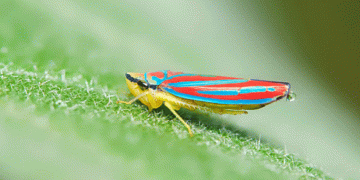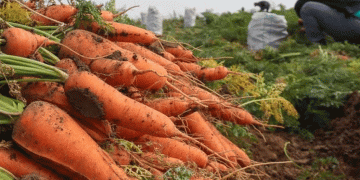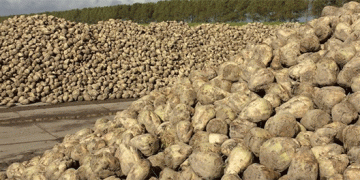To think it all began with a gooseberry snipper.
It was 1910. Gooseberries were big, being commercially grown in northern Indiana and southern Michigan. To facilitate production, William Urschel came up with a machine that separated the stem from the blossom end.
“That was Urschel’s very first machine,” said Urschel Vice President of Sales Tim O’Brien.
Some 50-plus different machines later, Urschel has grown to be a leader in developing processing equipment for fresh-cut produce as well as other industries. Headquartered in Valparaiso, Ind., the company operates in a 250,000-square-foot building with 300 employees and three foundries on a campus that’s about the size of four city blocks – and is no longer large enough.
For that reason, Urschel is looking at relocating all of its operations. The company expects to announce its plans for a move by the end of the year, with an eye on being resettled in a new spot by 2015.
“We’re pretty much landlocked here,” said Advertising Manager Debra Novello. “We’re always investing and looking into new types of tooling, of course, and the machinery we use to manufacture our parts is continuously getting larger in scale.
“We need more space.”
Vice President of Operations Rick Urschel said the company expects to identify a municipality for the new site about the time that this publication goes to press. Valparaiso is in the running; he declined to cite the other Indiana community that the company is considering.
However, he did say that the new facility will be much bigger with the potential to add on.
“We’re really trying to plan not only for the next 10 years, but the next 100 years,” he said.
There has also been no decision on what to do with the current site, Urschel added. Options include selling it for use as another manufacturing facility or tearing it down to make way for commercial redevelopment.
Evolution of fresh cut
Urschel Laboratories’ rise in the fresh-cut market parallels the canning industry.
“We had a machine that would cut green beans – the green beans you see in a can,” said O’Brien. “We would dice potatoes – the potatoes that would be in a can of soup.
“So we’ve really been involved with vegetables for I’ll say the majority of the 20th century.”
As the vegetable industry expanded from canning into the frozen and fresh-cut sectors, it was a natural transition for Urschel.
“The customers knew we were pretty adept at cutting those types of products,” O’Brien said.
In the 1990s, Urschel rolled out its first TranSlicer, the 2500 – a large, high-capacity machine with a 25-inch wheel for cutting fresh produce. That was followed by the TranSlicer 2000 and its 20-inch wheel, and most recently, the E TranSlicer Cutter, also with a 20-inch wheel and configured to make cutting wheel changeovers smoother. In addition, the E TranSlicer’s small footprint makes it easy to fit into existing lines.
“That initial machine has spawned a series of machines for the fresh-cut industry that are capacity different, size different and price point different, to give customers a range of choice,” he said.
Design Engineer Tony McCracken said the E TranSlicer was made to be versatile, for customers of all sizes.
“It’s really designed for the small fresh-cut vegetable person or a larger customer as well,” McCracken. “We have some folks that will want to slice maybe 10 pounds at a time to fill a hotel order, and we have some folks that want to know if you can do 10,000 pounds an hour.
“That’s the diversity we work with.”
Beyond that, R&D staff work to address individual customers’ needs for certain cuts.
“We provide them with a free test to be able to help them decide, with a detailed lab report with pictures or video and samples that they can look at and share with their bosses and R&D people,” said Tony Krasoczka, product testing specialist. It might be a matter of reconfiguring an existing machine, or purchasing a new one.
“It’s usually in the 95 percent range that we can make whatever they want.”
Fourth generation
At 34, Rick Urschel is the fourth generation of the Urschel family to be working in the family business. His father, Robert, is the CEO. His uncle, Dan, who is executive vice president, manufacturing, has been there 55 years. His brother, Andy, is assistant operations manager. A cousin, Heather Lynch, is inventory control manager.
He said the family’s touch and philosophy is evident – and remains pretty much the same as it has been since the beginning.
“A lot of the philosophies that we have as a company are not only from a standpoint of the quality of our equipment, but just how we treat employees is pretty uncommon in industry today,” he said. “You see a lot of these corporate conglomerates that the employee is just a number and they punch a time card and can easily be replaced. Here, the family has always kind of prided itself on being the watchdog for the employee.”
The family has also remained focused on its core business – constantly improving the technology it offers rather than spinning off into related but different products.
“One thing we actually pride ourselves in is NOT diversifying the company,” Urschel said. “Our core competency is making size reduction equipment. And the act that we don’t change from what we are good at is what makes us good at what we do.”
Looking forward
Today, Urschel continues to open new direct offices in key locations throughout the world, and also supports a large global network of third-party agents.
“One of them in Canada has been with us for 75 years,” O’Brien said. “So we’ve got a lot of history with some valuable partners.”
And the company looks to the world for growth
“The international part of our business is growing every year,” O’Brien said.
That means making sure there’s something for everyone in the product mix.
“Not everybody around the world requires the same capacities that we do in the U.S., so on one hand, we’ve been very conscious to try to develop machines that have a lot of capacity, but on the flip side, we’ve really tried to pay attention to the customers also who are not overly large and who don’t need a lot of capacity who might be in a developing market, say, whether it’s in South America, Asia or Europe.”
Delivering a smooth cut that helps maximize shelf life has been one of the company’s main focuses, and continues to be.
“Whether you’re cutting through a tomato or a cucumber or a leaf of lettuce, cutting that very cleanly with minimal cell damage is very important, and that’s what we try to engineer in all of our machinery,” O’Brien said. “Customers are able when they’re processing the product to get as long of a shelf life as they can so it stays attractive in the bag through the pull date and everything else.”
Urschel has also focused on sanitation in the last 20 years or so, building machines that are easy to disassemble, maintain and sanitize. And the family-owned business takes pride in holding a huge stock of parts.
“We’ve got a multimillion dollar inventory of parts on the shelf here and if a customer needs a part for a machine, chances are 99.9 percent that we have that part,” O’Brien said. “That’s one of the beauties of being privately held – the family wants those parts on hand.
“There are literally more parts than probably is necessary just so we can ensure that a customer is never in need of an Urschel part.”






























